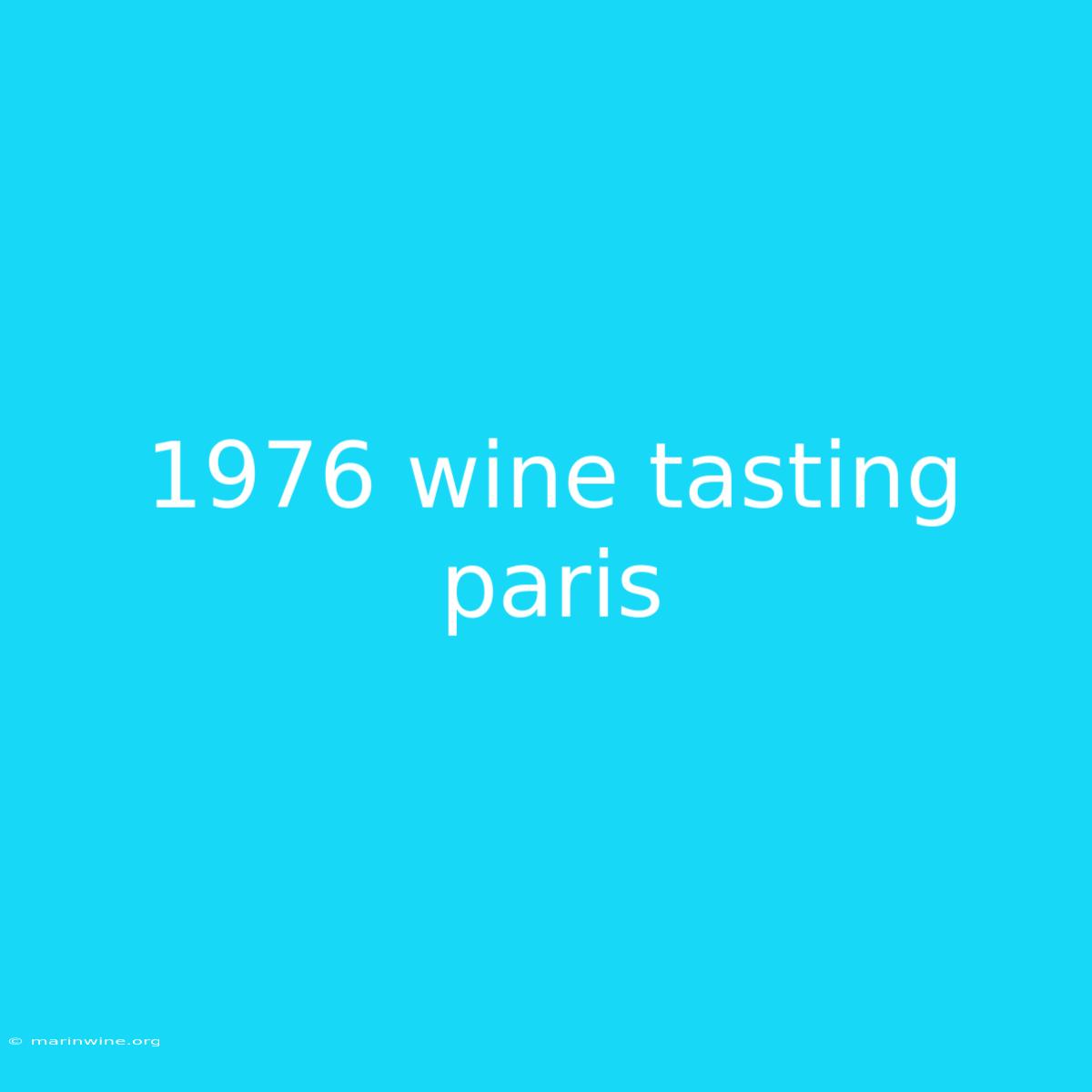The 1976 Paris Wine Tasting: Did French Wine Really Lose to California?
Has French wine ever been challenged? The world would soon find out, and the answer would forever change the landscape of winemaking.
Why It Matters: The 1976 Paris Wine Tasting was a blind tasting competition that pitted some of the world's finest French wines against their American counterparts. This event, which became known as "The Judgment of Paris," became a watershed moment, shaking up the wine world's established hierarchy.
Key Takeaways of Paris Wine Tasting:
| Takeaway | Description |
|---|---|
| Upset Victory: A California Chardonnay and Cabernet Sauvignon beat out the best French wines in their respective categories. | This unexpected result challenged the long-held belief that French wine was the absolute pinnacle of quality. |
| Impact on Winemaking: The tasting fueled the growth of the California wine industry and raised the profile of American wines globally. | It ignited innovation and encouraged experimentation, paving the way for new styles and regions. |
| A Shift in Perception: The event forced the French wine industry to re-evaluate its practices and address the changing tastes of consumers. | It opened up conversations about terroir, production techniques, and the role of new-world wines in the global market. |
The 1976 Paris Wine Tasting
The story behind the event: The competition was organized by Steven Spurrier, a British wine merchant living in Paris. He aimed to challenge the prevailing perception of French wine superiority and showcase the quality of wines produced in other regions, particularly California.
Key Aspects:
- The Judges: The panel consisted of eleven respected French wine experts, including sommeliers and wine writers.
- The Wines: The tasting included six California Chardonnays and six Cabernet Sauvignons alongside eleven French whites and eleven French reds.
- The Blind Tasting: The wines were presented in a blind tasting format, meaning the judges were unaware of the wines' origins.
The California Triumph
The iconic results: To everyone's astonishment, the top-scoring white wine was a 1973 Chateau Montelena Chardonnay from California. In the red category, a 1973 Stag's Leap Wine Cellars Cabernet Sauvignon also triumphed over the French competition.
Why did California win? While the French wines were considered refined and elegant, the California wines offered a bolder and more fruit-forward style that resonated with the judges.
The Impact of The Judgement of Paris
The event had far-reaching consequences: It highlighted the potential of American winemaking and challenged the old guard of the French wine industry. It also helped to pave the way for the global success of wines from other new-world regions, like Australia, New Zealand, and South America.
Beyond the competition: The Judgment of Paris is a testament to the power of innovation and the constant evolution of the wine world. It also serves as a reminder that even the most established traditions can be challenged and overturned.
The Lasting Legacy
A turning point: The 1976 Paris Wine Tasting was a pivotal event that redefined the world's perception of wine and fueled the rise of new-world winemaking.
The ongoing story: Today, the event is celebrated as a landmark moment in wine history, and its legacy continues to inspire winemakers and enthusiasts worldwide.
FAQ for the 1976 Paris Wine Tasting
Q: Who were the winners of the 1976 Paris Wine Tasting?
A: The winning wines were Chateau Montelena Chardonnay (white) and Stag's Leap Wine Cellars Cabernet Sauvignon (red), both from California.
Q: Who organized the competition?
A: The competition was organized by British wine merchant Steven Spurrier.
Q: Why was the tasting called "The Judgment of Paris?"
A: It was a reference to the ancient Greek myth of the Judgment of Paris, where a shepherd named Paris chose Aphrodite as the most beautiful goddess.
Q: What were the implications of the results?
A: The results challenged the perception of French wine superiority and helped to elevate the reputation of American wines.
Q: What impact did the tasting have on the wine industry?
A: The tasting encouraged innovation in winemaking and helped to pave the way for the success of new-world wines.
Q: Are the wines from the tasting still available?
A: Some of the wines from the tasting are still available, though they are very rare and expensive.
Tips for Learning More About the 1976 Paris Wine Tasting
Here are a few tips for delving deeper into this historic event:
- Read about the event: Many books and articles have been written about the 1976 Paris Wine Tasting.
- Watch documentaries: Several documentaries explore the event and its aftermath.
- Visit the wineries: You can visit the wineries that produced the winning wines, Chateau Montelena and Stag's Leap Wine Cellars, and learn more about their history and winemaking techniques.
- Attend wine tastings: Look for tastings that feature wines from California and other new-world regions to experience the diversity and quality of winemaking beyond France.
Summary of the 1976 Paris Wine Tasting
The 1976 Paris Wine Tasting was a landmark event that challenged the established hierarchy of the wine world. It showed that winemaking could flourish in regions outside of France and that American wines could compete with the best in the world. The event sparked a wave of innovation and a new appreciation for the diversity and potential of winemaking.
Closing Message: The 1976 Paris Wine Tasting is a reminder that the world of wine is constantly evolving. It is a testament to the passion and dedication of winemakers across the globe, pushing the boundaries of quality and innovation. As we look to the future of wine, the lessons of "The Judgment of Paris" continue to resonate, encouraging us to be open to new experiences and to appreciate the diversity and complexity of the world of wine.

